Army Air Forces C-2 Wrecker
This page is dedicated to the history of this vehicle
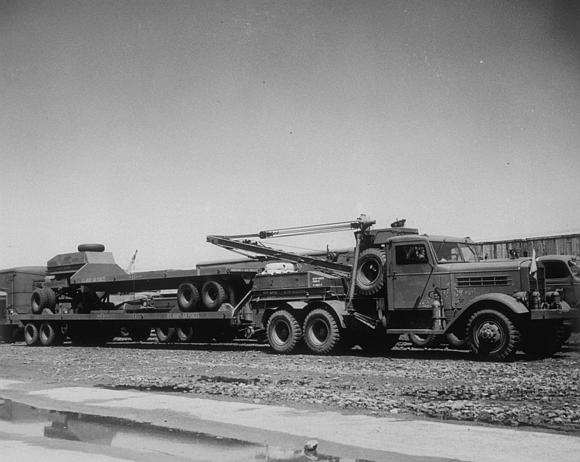


The Army Air Forces Wrecking Truck Tractor Type C-2, 7.5 ton 6X6, was originally made by the Federal Motor Truck Company of Detroit Michigan. It was also known as the Federal model 606 series up to the 606E.The C-2 was one of the largest, if not the largest, vehicle used in the Army Air Forces. The truck was also manufactured before and during WWII by Biederman, Corbitt and possibly REO.
For more information on surviving C-2's click here. For more information on our 1945 Federal C-2 Wrecker click here.
The photo on the left is from a wartime brochure published by Timken Bearing showing all of the different trucks their bearings, axels and equipment were installed in. This view shows the Biederman C-2 wrecker. There sure are a lot of differences between the manufacturers. Note how the whole crane appears to be different with spare tires are mounted a lot higher on the boom tower. Other obvious differences include the: grill, rear fenders, outriggers and stands, boom and many others. The photo on the right looks to be the same exact picture as seen above with the registration number removed.

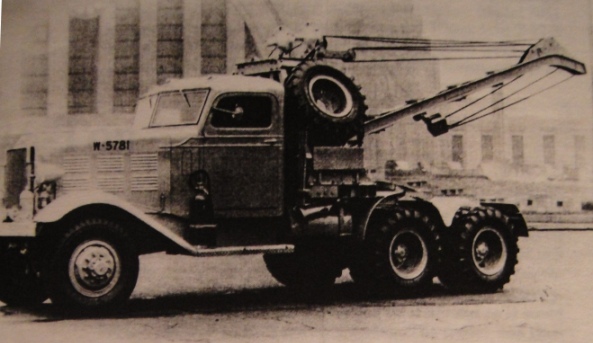
This shot shows the Biederman C-2 which looks like it has the same boom crane as the Corbitt. Also interesting is that it is towing one of the C2 trailers on the converter dolly attached to the pintle hitch instead of the fifth wheel.
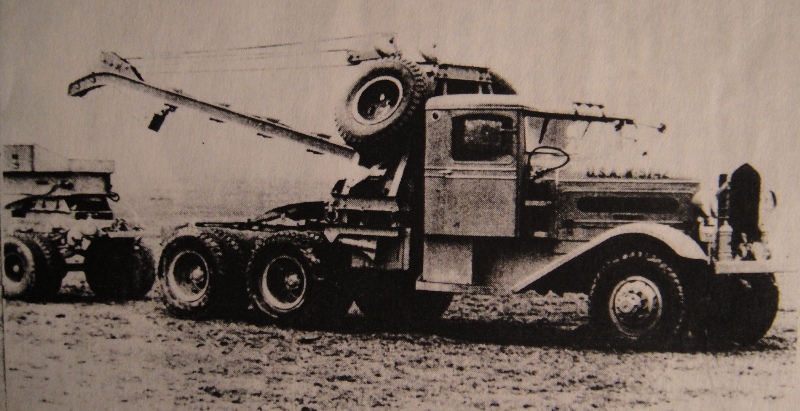
Here are some Federal ads from WWII or shortly after. I want to thank Jeff Lakaszcyck for sending in these ads. They are great!
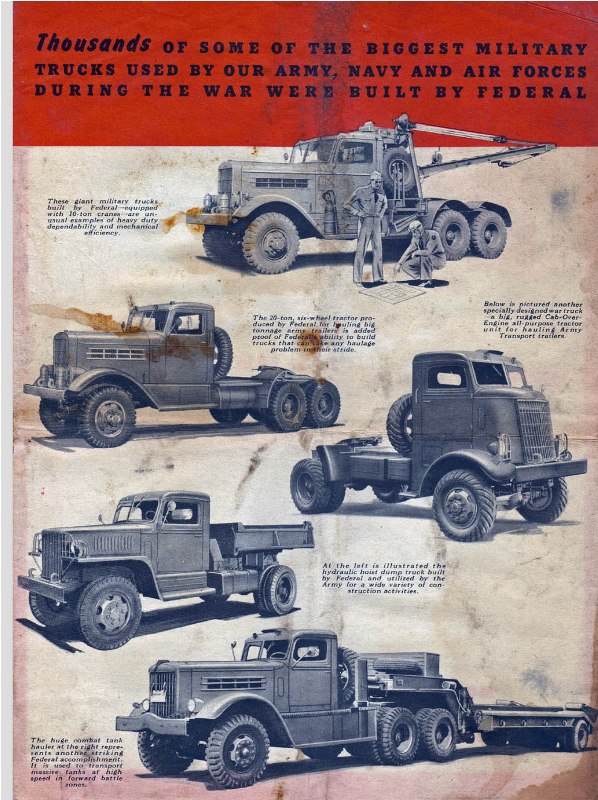
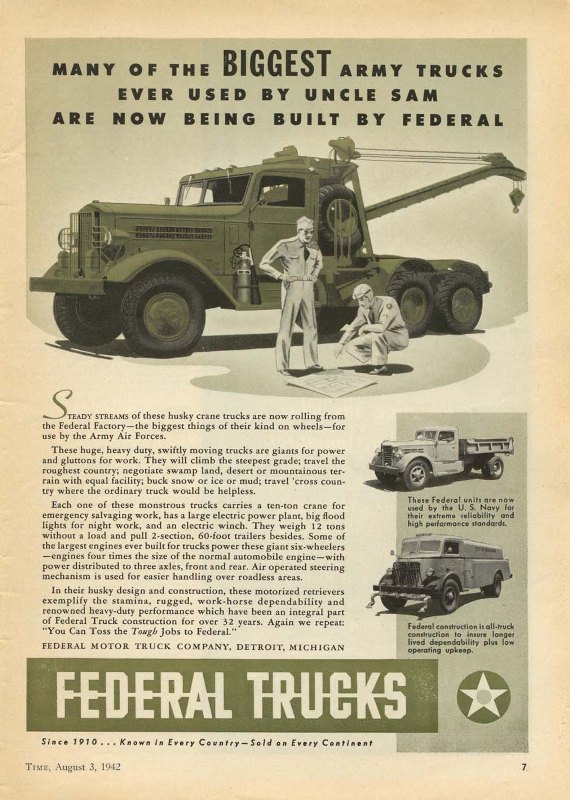

Here is the Federal C-2 which seems to be the most common one produced. I base this on the fact that there are few photos of the Beiderman and Corbitt wreckers especially when compared to the Federal. This shot shows the early style boom.
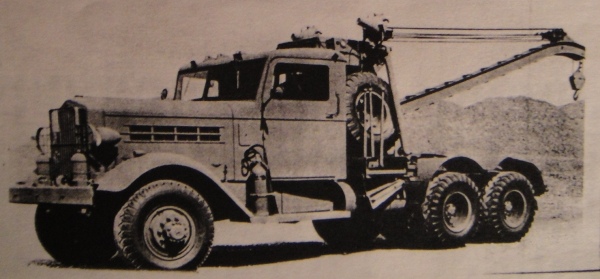
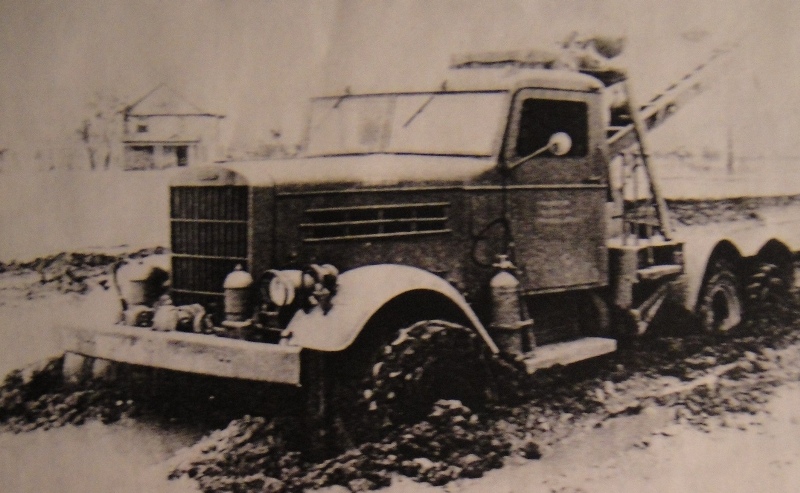
This is from TM 9-2800
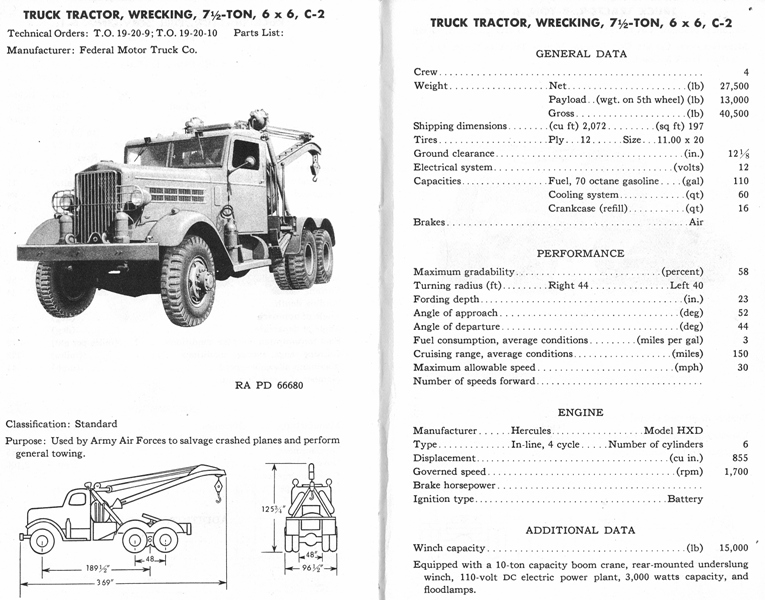
The photos below are excerpts from the TO
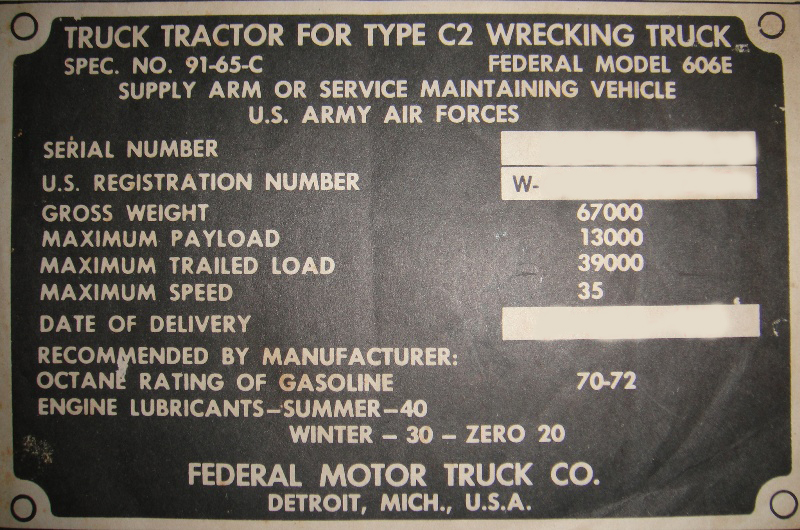
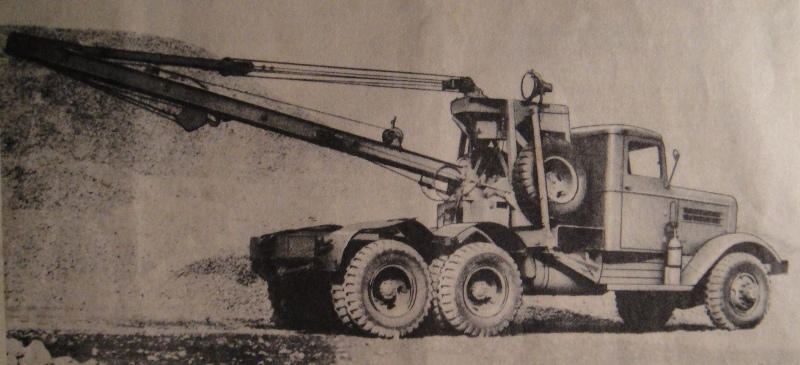

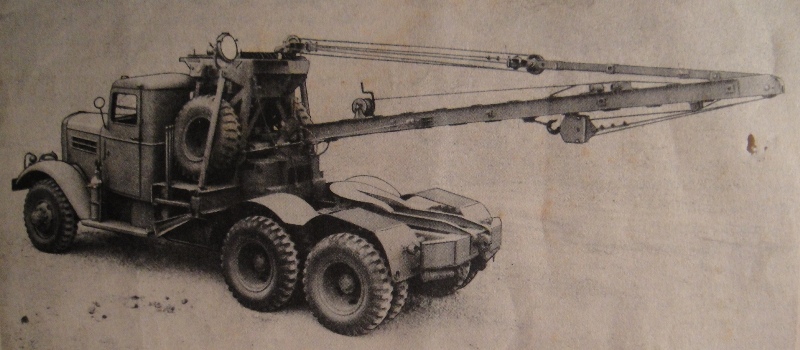
One feature that all of the manufacturers had in common were the two air springs mounted on each side of the radiator just behind the bumper.
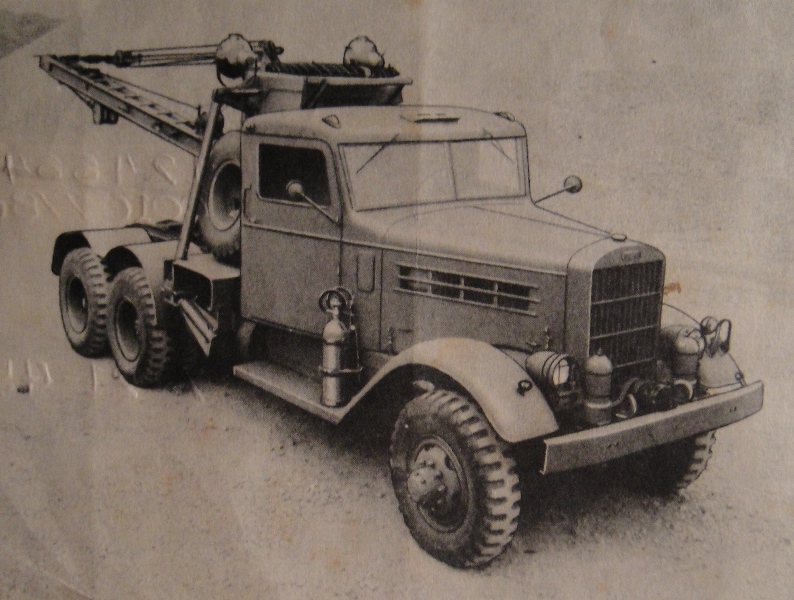
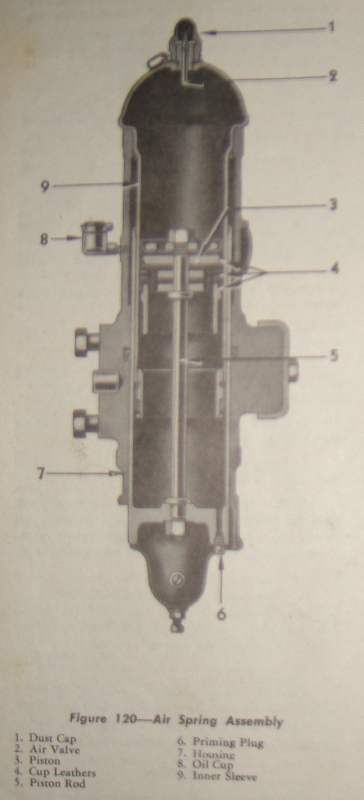
The round device just in front of the radiator is an inertia starter exactly like the ones used on WWII aircraft engines. This starter had a heavy flyweight that could be cranked up to speed. It could then be engaged to turn the engine over. Here is a photo of a REO truck (not a C-2) showing the hand crank installed. We sure could use one of these cranks if you happen to know where one might be.
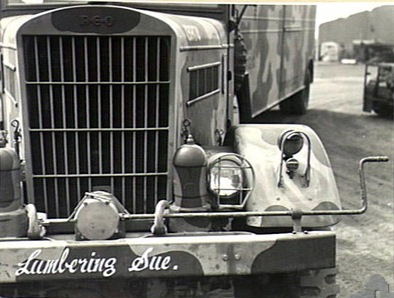
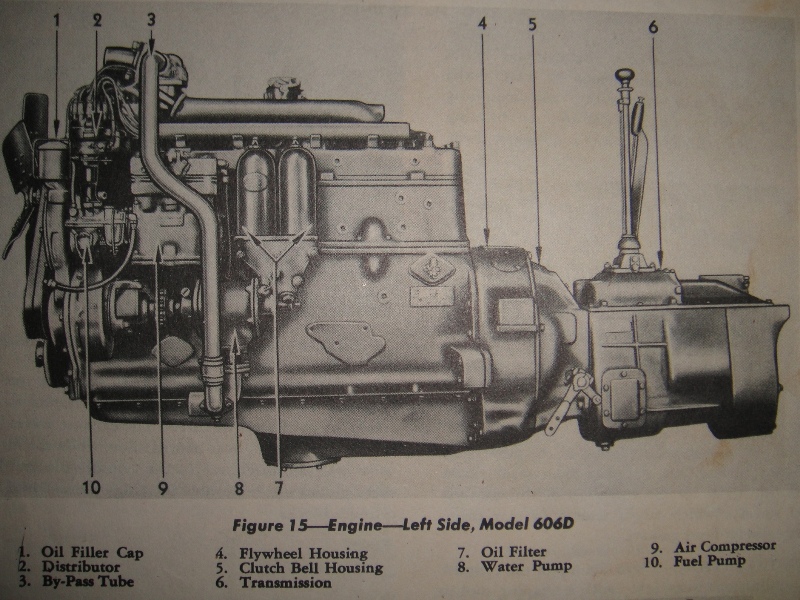
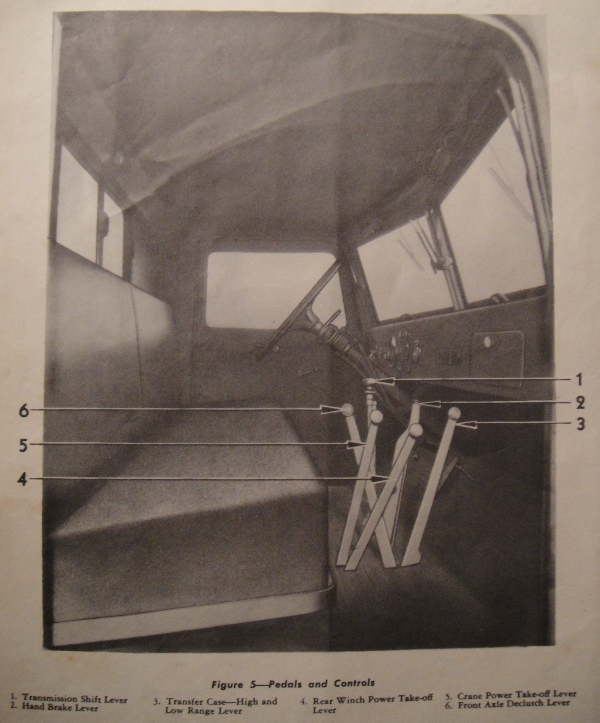
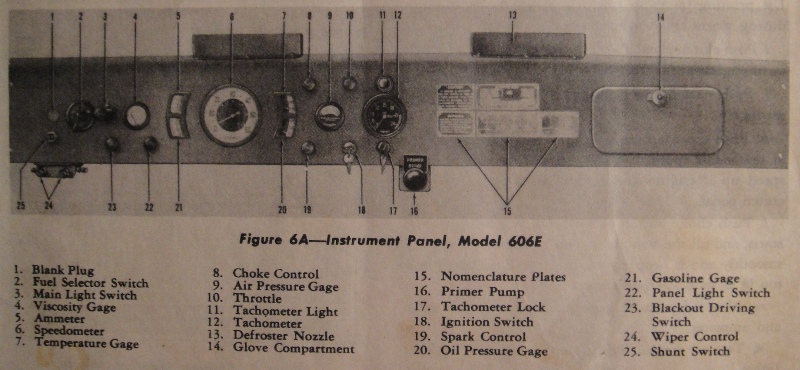
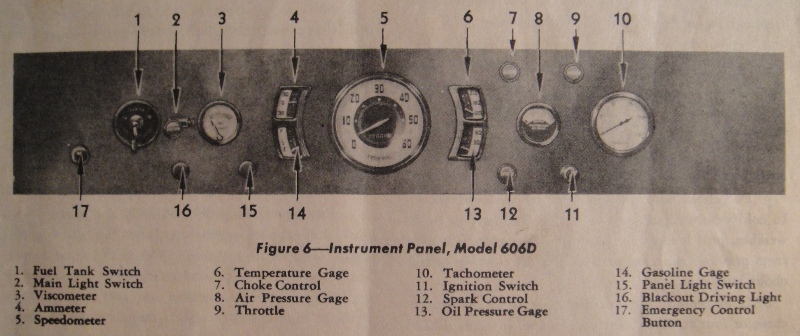
On the left is the boom operators controls. The tread plate below the levers is a platform that could slide out for the operator to stand on. Other controls were mounted higher up on the boom tower. On the right, you see a great color shot showing a mechanic standing on the retractable platform while he moves a B-17G outer wing panel.
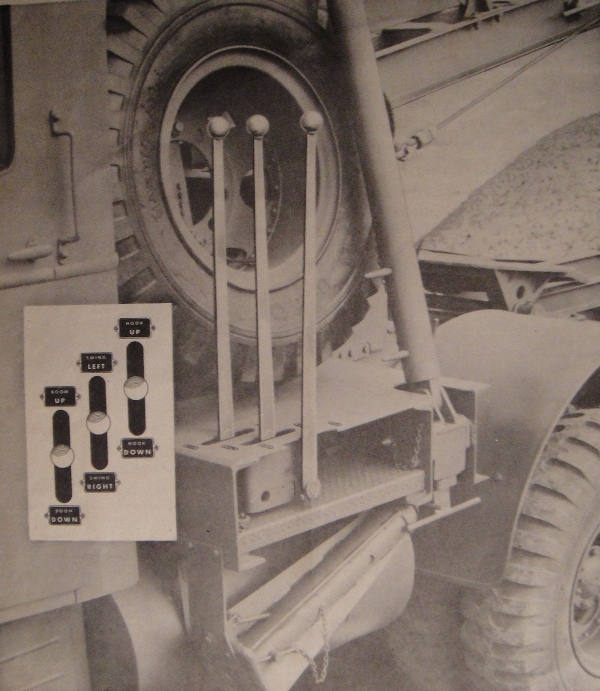
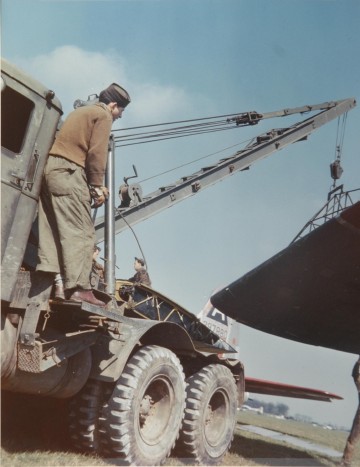
This is a great shot showing the outriggers in the extended position. Notice how the jack stands are adjustable. The rear stabilizers are in the stowed position.
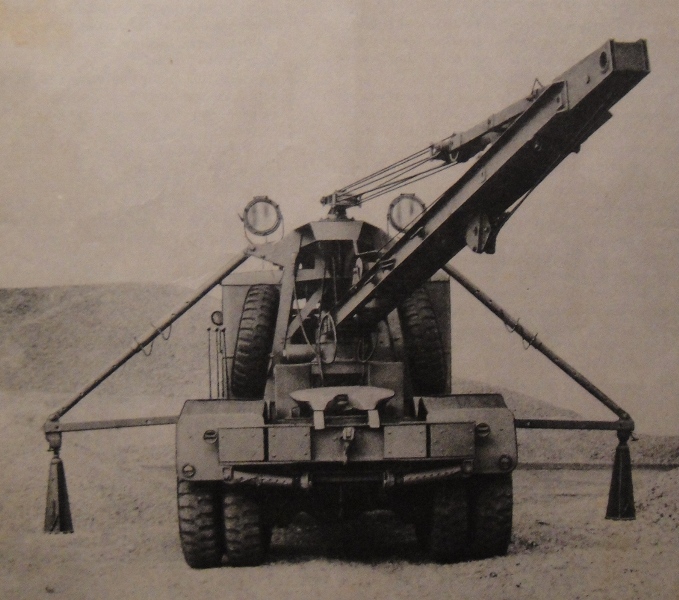
This is the gas engine generator that makes 115 volts DC to power the large flood lights on top of the boom tower. The generator control panel had other outlets for power tools and field lighting.
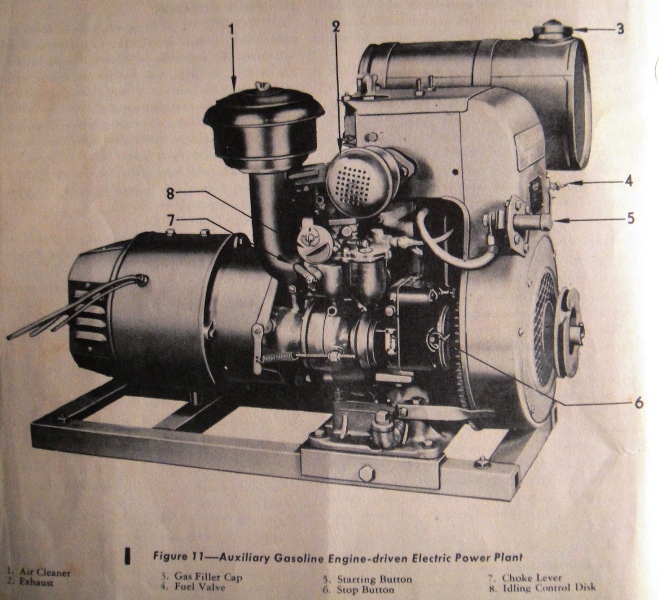
This is how the C-2 Wrecker was issued. It came with two trailers; a 25 foot and a 40 foot low bed and a converter dolly. In the picture below you can see the 25 foot trailer is hooked up to the converter dolly on top of the 40 foot trailer. Also pictured is the 25 foot trailer with the stakes installed

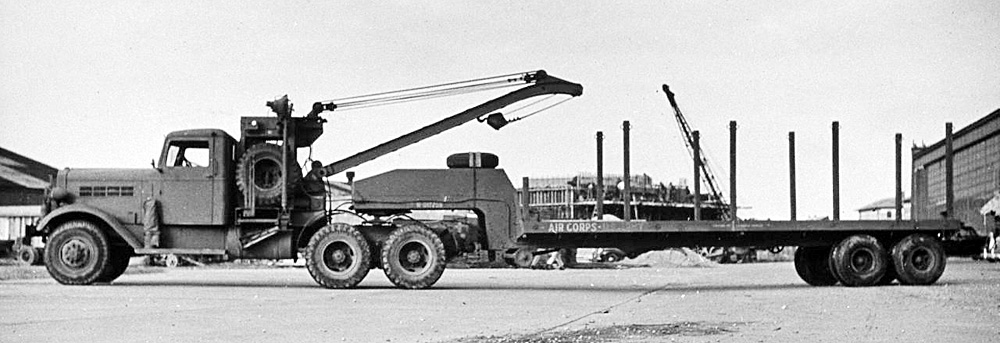
This is the 40 foot trailer

This C-2 is helping to level the P-47 in preparation for bore sighting the 8 fifty caliber machine guns.
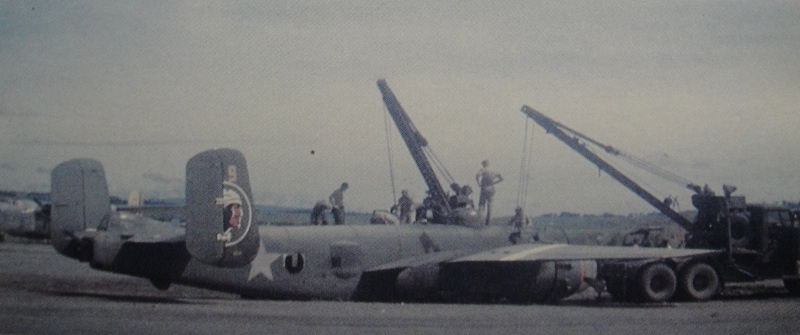
What a beautiful set of color photos.
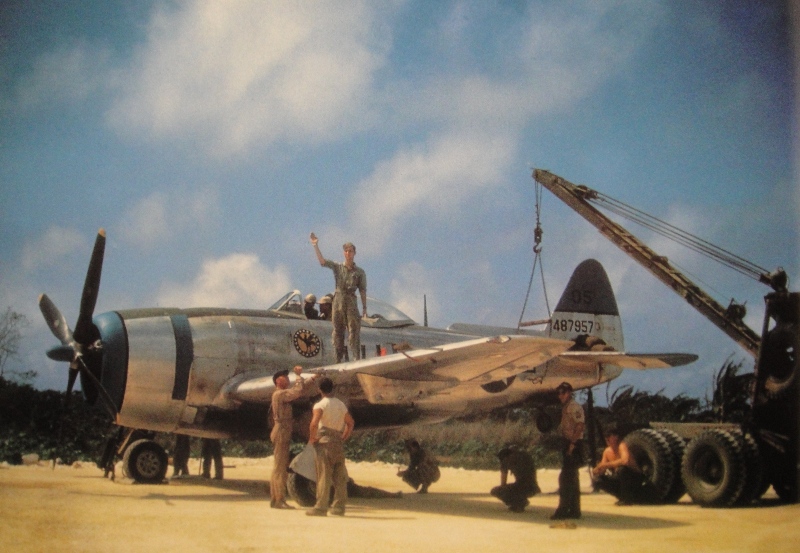
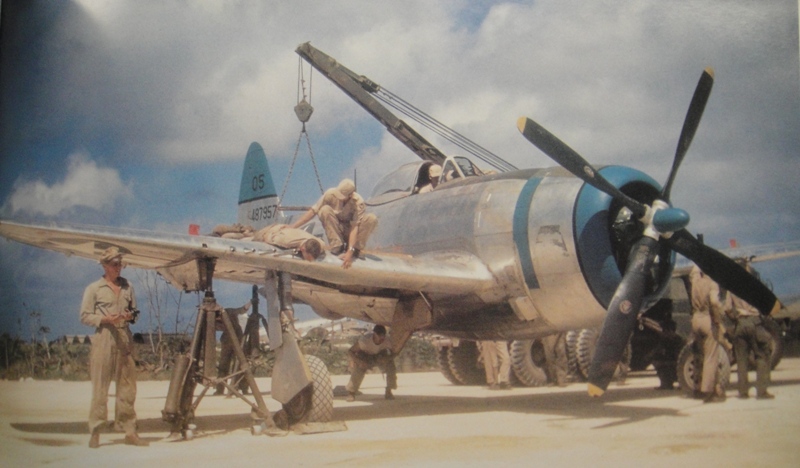

Two of the most important pieces of equipment used my the Army Air Forces: the Cletrac M-2 High Speed Tractor and the C-2 Wrecker. Notice the ambulance in the background. These guys look like they are ready to help the bomber crews, who might be all shot up, as they return from a mission.
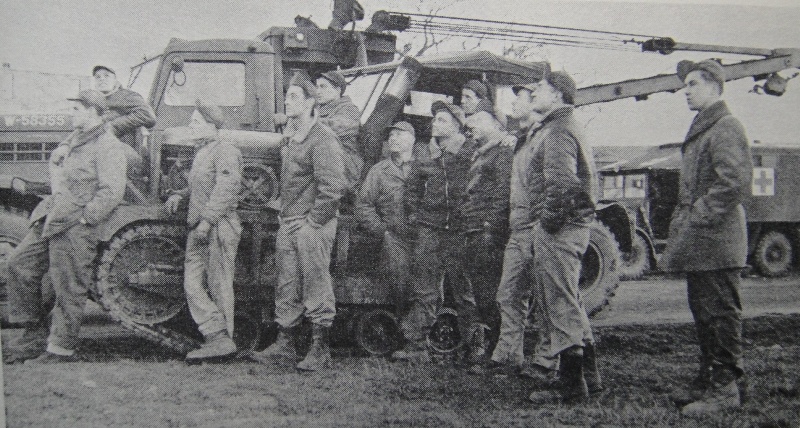
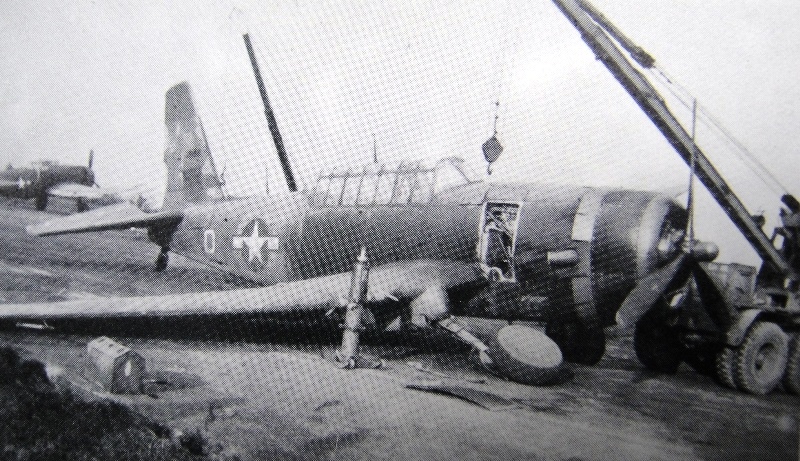
These next three shots show a Bell P-39 Airacobra being loaded ...or unloaded...not sure which
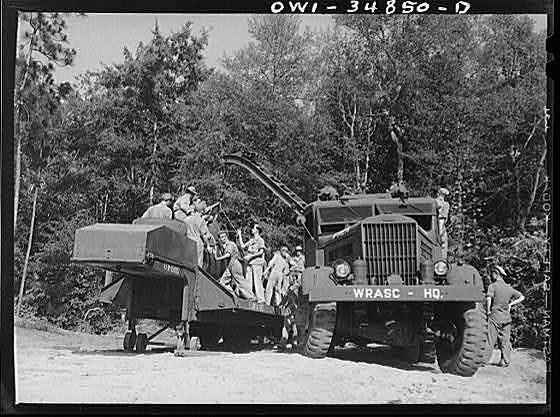
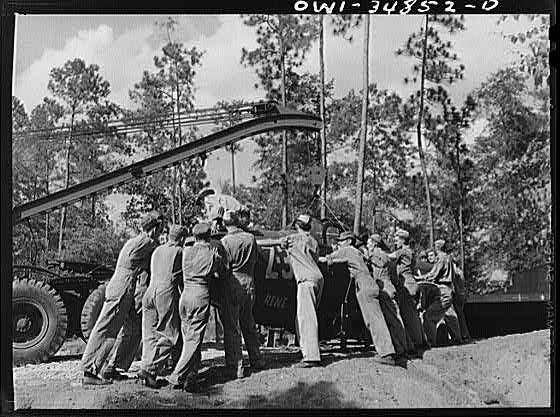
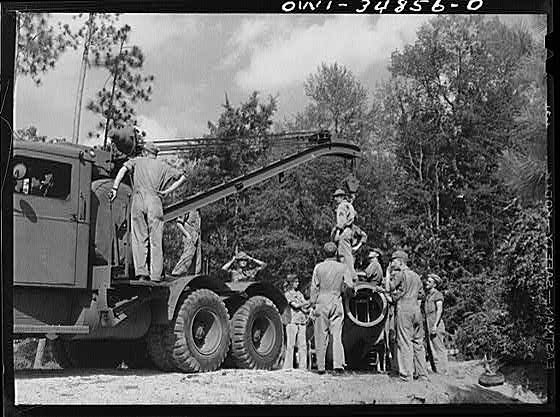
Disassembling a Curtis P-40 in a little less than ideal conditions
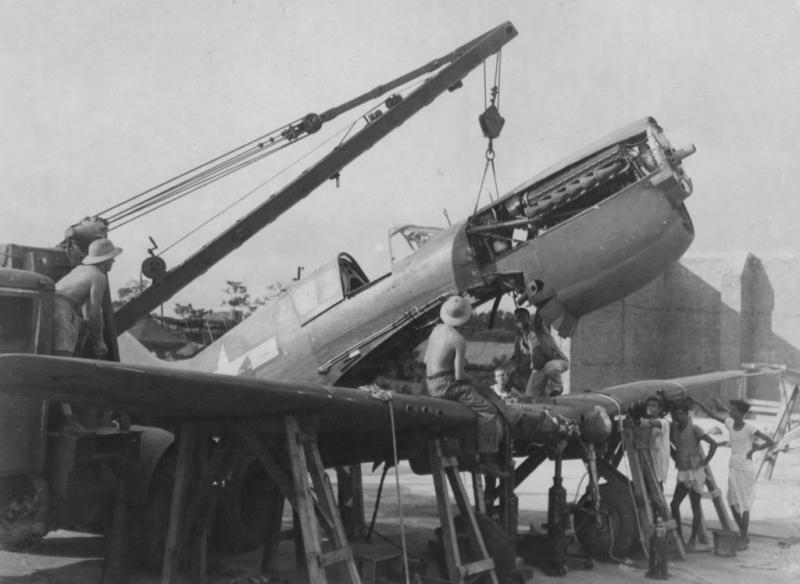
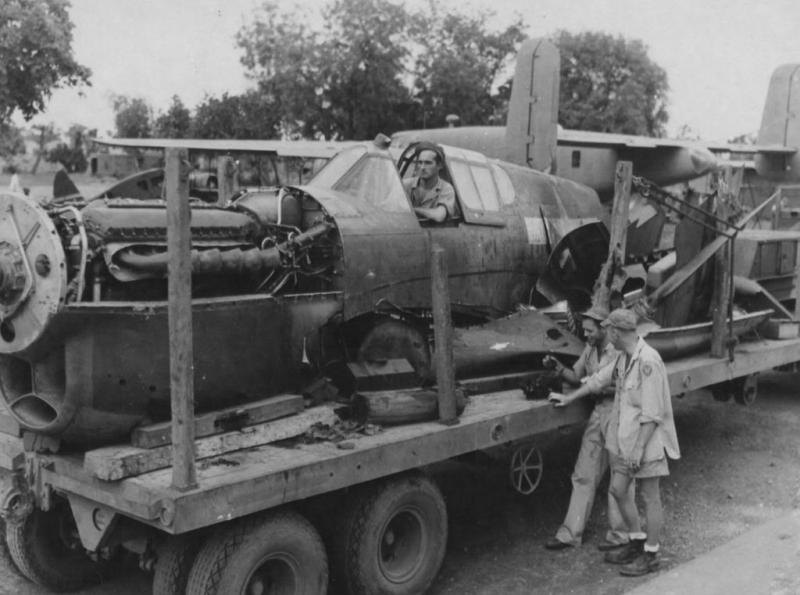
Changing engines on a C-54 Skymaster
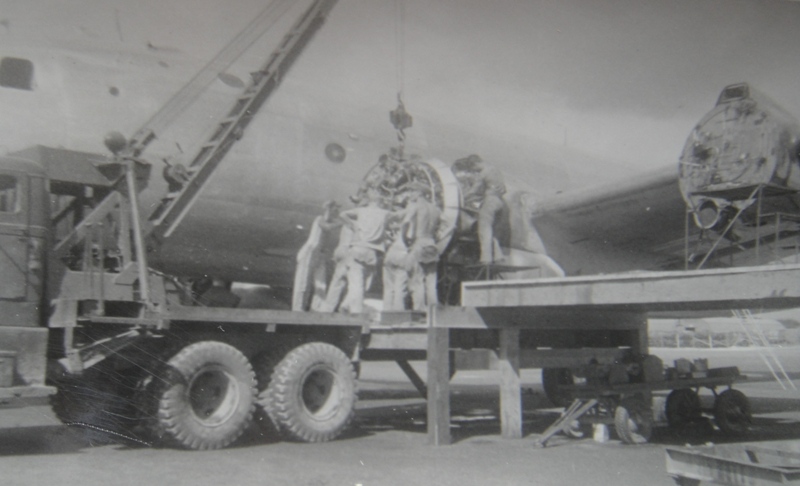
Now that's a load!
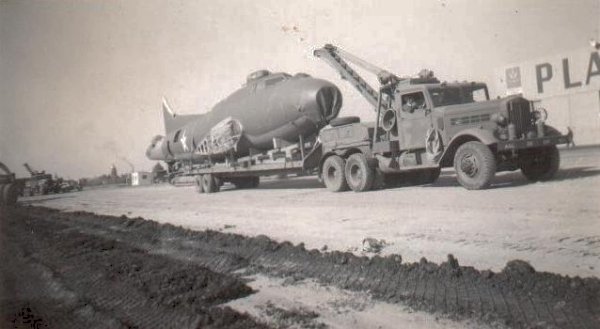
A completely different B-17 fuselage and, I would think, a very tired crew!
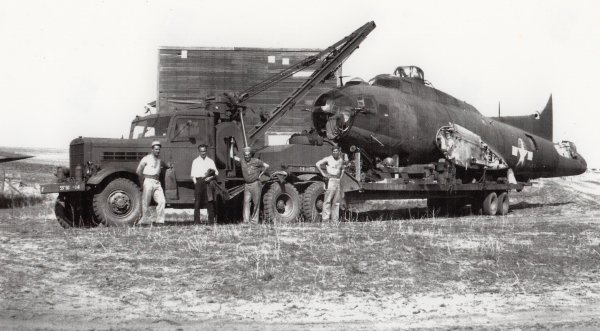
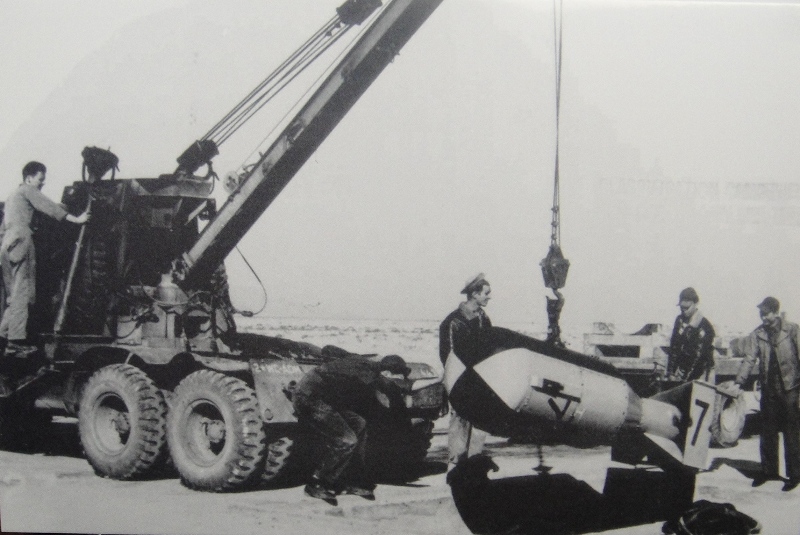
A crew at Wendover Field in Utah lowers a Little Boy practice bomb into the loading pit. One of the 509th B-29's would then be backed over the pit so the bomb could be raised into the forward bomb bay. This very loading pit is still there at Wendover along with the original flight line and many of the WWII buildings. It is a great place to visit as they have a great museum with wonderful volunteers who are doing a great job. Check them out here:wendoverairbase.com
These guys are practicing for dropping the first atomic bomb that was delivered to Hiroshima. The bomb was loaded on Tinian Island using an identical bomb pit which is also still in existence. Check it out here: northernmarianas.50webs.com
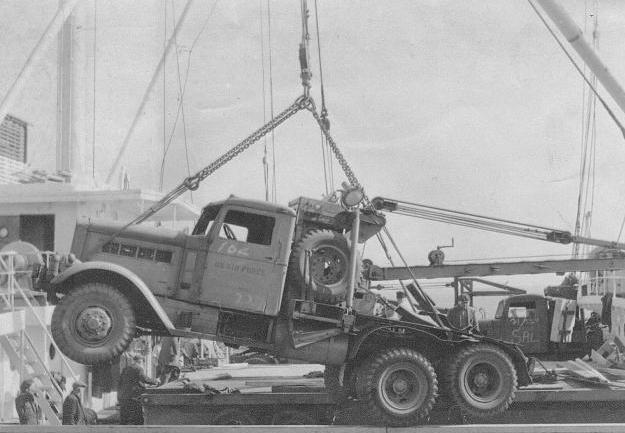
With WWII brought to an early end thanks to weapons like the one above a lot of soldiers and their equipment started to head for home. Here are two well used C-2's being loaded on a ship presumable after the end of the war. Many wreckers were simply left behind and several of those are in the hands of collectors in Britain and Europe. To see some of the surviving wreckers click here.
Here is a link to a book about Wreckers available from the Military Vehicle Preservation Association.
Here is another shot of a flight officer and the ground crew. Any information on this photo?
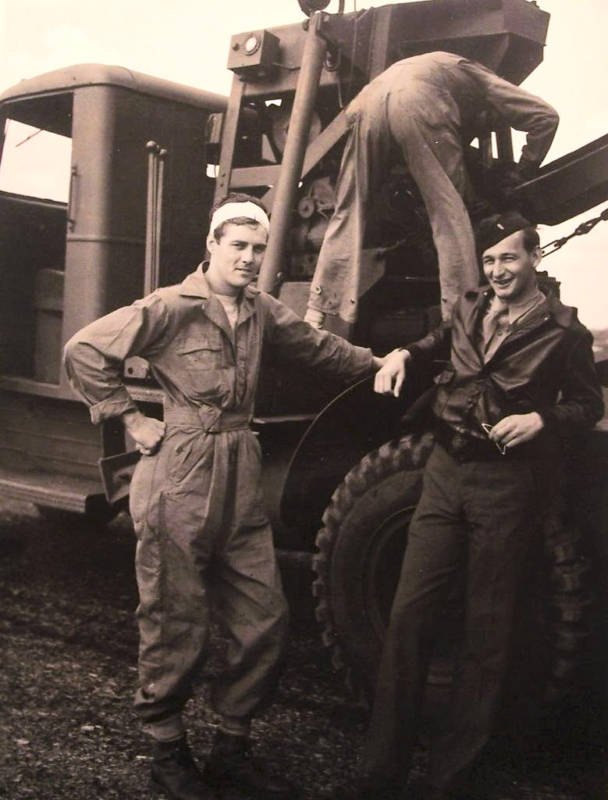
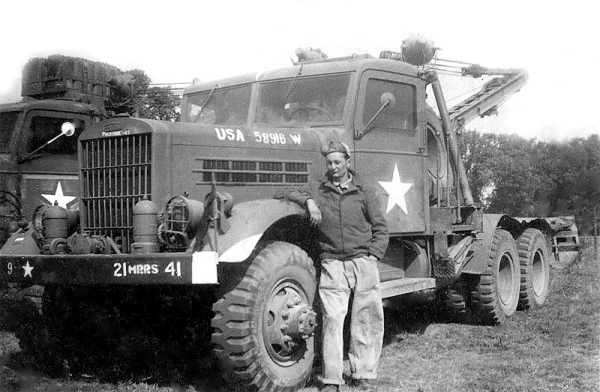
"Hello Taigh I just about fell off my chair when I discovered all the information on your site regarding the Federal C2 wreckers. I have been looking for more information on that truck
for a few years (with limited success) and found a few owners on www.federalmotortrucks.com.That is where I found that Jaap R,. owned one so I contacted him to
perhaps swap some information. I sent him a picture of my dad standing next to a C2. That picture ended up on lonerover.com (now no longer a website) and now you have the picture of my dad
standing next to #58916 on your site. He served in the 9th AAF in the 21st Mobile Reclamation & Repair Squadron.
Apparently you have a copy of TO 19-20-16--I have found just a couple of pages with my dad's pictures. I would like to learn more about the Federal and am already working on how to get to Stockton to see one in
person (we live in the Midwest). I don't know if that will happen but anyway I just wanted to introduce myself give you some background on that picture."
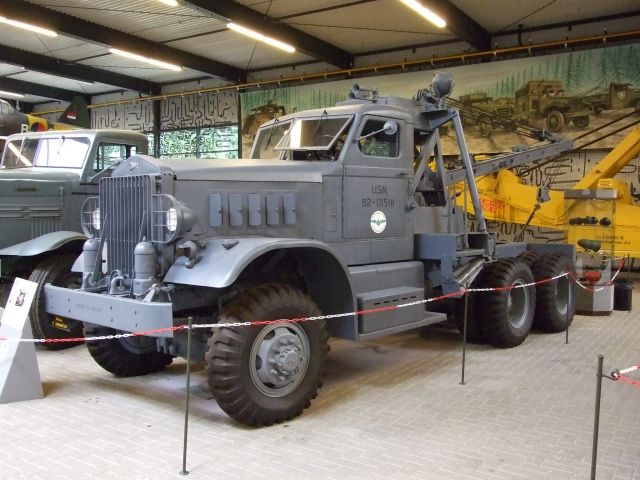 "I've attached a copy of the Marmon-Herrington ad that the photos I sent came from. The ad indicates these trucks were built as vehicle and tank recovery wreckers, but
not all was truthful in wartime. They certainly could have handled aircraft recovery. The equipment certainly looks very similar to the C-2's, except there is no 5th wheel. They definitely went to Russia, I have
an M-H brochure which confirms this. M-H was known as the "Birthplace of the Arsenal of Democracy". Many of the concepts of the big and small all wheel drive trucks, from 1/2 ton to 7-1/2 ton, were developed by
M-H in the 1930's. It is ironic that they didn't win any of the big contracts for U.S. all wheel drive trucks during the war, but they did a huge business with our allies with Lend-Lease. They are probably best
known for converting Ford trucks to all wheel drive, starting in 1935. There were 4x4 and 6x6 models.
"I've attached a copy of the Marmon-Herrington ad that the photos I sent came from. The ad indicates these trucks were built as vehicle and tank recovery wreckers, but
not all was truthful in wartime. They certainly could have handled aircraft recovery. The equipment certainly looks very similar to the C-2's, except there is no 5th wheel. They definitely went to Russia, I have
an M-H brochure which confirms this. M-H was known as the "Birthplace of the Arsenal of Democracy". Many of the concepts of the big and small all wheel drive trucks, from 1/2 ton to 7-1/2 ton, were developed by
M-H in the 1930's. It is ironic that they didn't win any of the big contracts for U.S. all wheel drive trucks during the war, but they did a huge business with our allies with Lend-Lease. They are probably best
known for converting Ford trucks to all wheel drive, starting in 1935. There were 4x4 and 6x6 models.
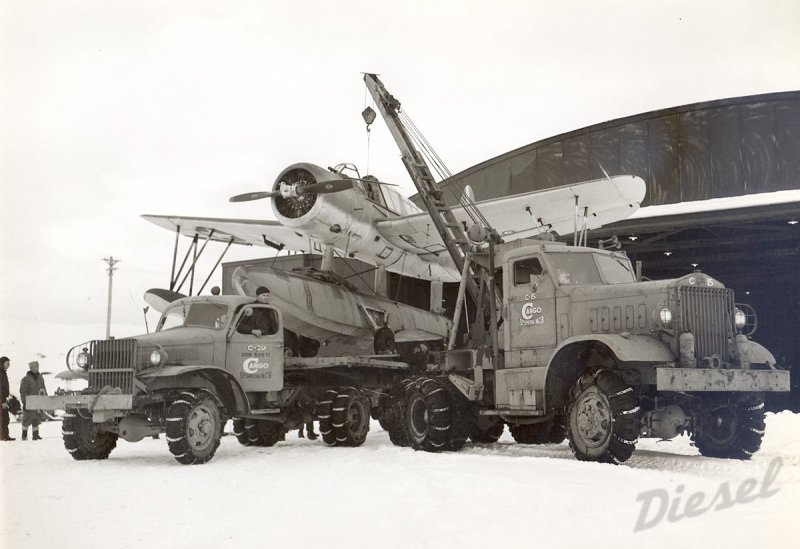 Technically, the only C-2's were the Corbitt, Biederman, and Federal 7-1/2 ton wreckers built for the USAAF (some say Reo also built C-2's, but I am not entirely convinced of it). There were other similar trucks
built for other branches of the services, but they were not designated as C-2's. I think after the War C-2 became a generic term in the civilian world for all similar trucks. Corbitt, Biederman, Federal, and Reo
also built the F-1 fuel tanker semi tractor, which had a nearly identical cab and chassis to the C-2 (the F-1 had a 5.5" longer wheelbase). The Federal F-1 was a model 605, the Reo a 29XS, and the
Corbitt a 54SD6. The Biederman was simply an F-1. Reo also built a Cardox airport firefighting truck on the 29XS chassis (29FF ?). The Federal and Reo 7-1/2 tonners are nearly identical, the only difference in
appearance besides the nameplate is the front fenders. The Federal fenders are somewhat "styled", while the Reo's are flatter in appearance. The Reo disc wheels also have more holes in them, but these
are easily swapped around and not a sure thing.
Technically, the only C-2's were the Corbitt, Biederman, and Federal 7-1/2 ton wreckers built for the USAAF (some say Reo also built C-2's, but I am not entirely convinced of it). There were other similar trucks
built for other branches of the services, but they were not designated as C-2's. I think after the War C-2 became a generic term in the civilian world for all similar trucks. Corbitt, Biederman, Federal, and Reo
also built the F-1 fuel tanker semi tractor, which had a nearly identical cab and chassis to the C-2 (the F-1 had a 5.5" longer wheelbase). The Federal F-1 was a model 605, the Reo a 29XS, and the
Corbitt a 54SD6. The Biederman was simply an F-1. Reo also built a Cardox airport firefighting truck on the 29XS chassis (29FF ?). The Federal and Reo 7-1/2 tonners are nearly identical, the only difference in
appearance besides the nameplate is the front fenders. The Federal fenders are somewhat "styled", while the Reo's are flatter in appearance. The Reo disc wheels also have more holes in them, but these
are easily swapped around and not a sure thing.
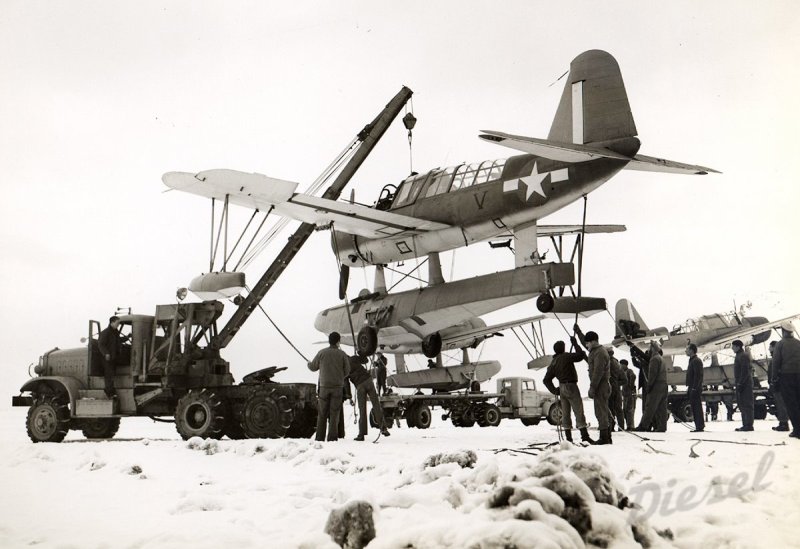 Reo did build a 10 ton 6x6 aircraft salvage wrecker for the Navy, with equipment similar to the C-2. Reo built about 200 of these trucks, and a handful have survived. These trucks are not in any of the books,
but are shown in a 1945 Reo Annual Report I have, plus I have photos of survivors. I have yet to come across a closeup photo of this truck while in the Navy, except for one with a cement mixer body on it
(with USN markings !) The annual report does not make any mention of 7-1/2 ton wreckers, only the tractors and Cardox fire trucks.
Reo did build a 10 ton 6x6 aircraft salvage wrecker for the Navy, with equipment similar to the C-2. Reo built about 200 of these trucks, and a handful have survived. These trucks are not in any of the books,
but are shown in a 1945 Reo Annual Report I have, plus I have photos of survivors. I have yet to come across a closeup photo of this truck while in the Navy, except for one with a cement mixer body on it
(with USN markings !) The annual report does not make any mention of 7-1/2 ton wreckers, only the tractors and Cardox fire trucks.
Sterling also built a 10 ton 6x6 aircraft wrecker for the Navy in much larger numbers, the DDS235. I think the Sterling and Reo probably had similar specs, but the cabs did not look at all alike. Many of the
Sterlings have survived, but not as many as the Federals. The "Stuart Motor Company" truck on your website is a Sterling DDS235, as is the red and white truck in the background of one photo (you speculate this
may be a Corbitt)
I am not 100% sure on this, but I think Corbitt only built some late '30's and very early '40's model C-2's. By '42 Corbitt was up to their necks with orders for the standard 6 ton 6x6 50SD6. Corbitt was a small
outfit, I would be surprised if they had production capacity for much else besides the 6 tonners. I think Federal and Biederman built all the C-2's after '42 or so, with the majority from Federal, assuming I am
correct that Reo didn't build any.
If you are interested , I am the moderator for the "What Am I" on the ATHS discussion page. We post a photo of a different old truck every day and folks try to guess what it is. We also have a pretty lively
discussion page (Road Kill Cafe), and everyone is pretty friendly. Here is a link to the WAI if you want to check it out.
Wow, sorry if this went too long! Take care."
"I thought I would send you some strictly Sterling stuff. Even though the 10 ton Sterling DDS235 wreckers were not technically C-2's, they were certainly very similar and
perhaps even the Navy equivalent. They certainly deserve space on your website.If you haven't figured it out, I really have a soft spot for these Sterling's. I probably have 100 times more info than this on the
civilian models.
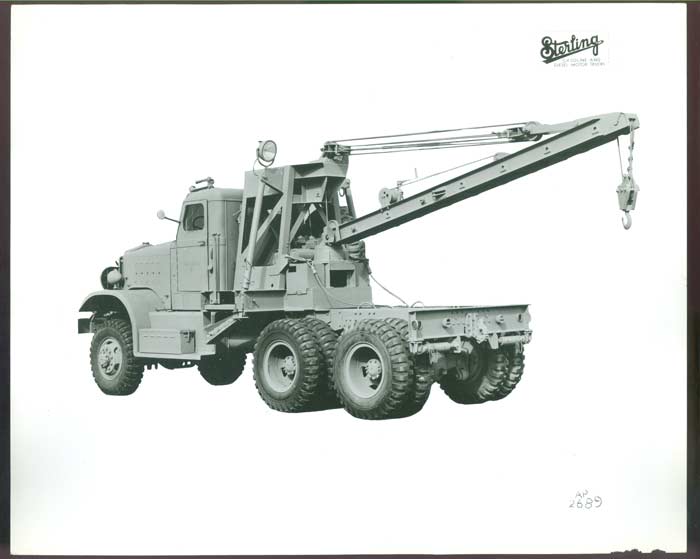
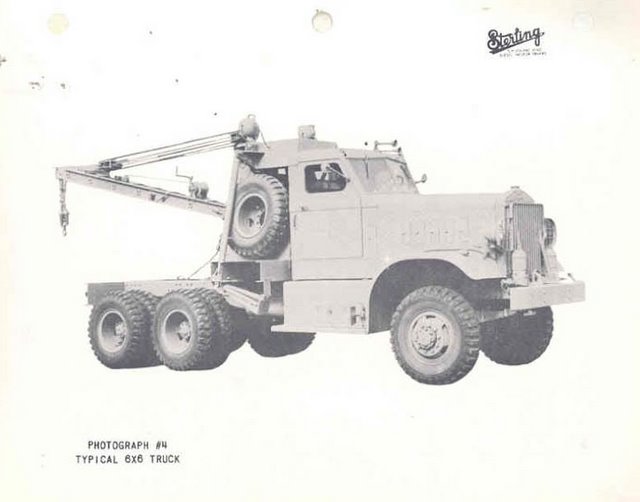
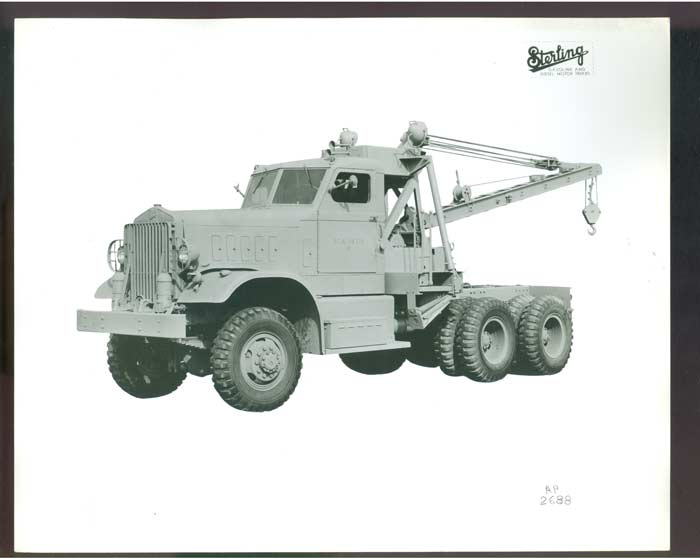
Sterling trucks go back to 1907, and were built in Milwaukee. They were very respected in their time, particularly in the '20's thru '40's. Never a large producer, they were very popular heavy duty trucks,
particularly in the northeast and west coast. Sterling's main claim to fame was their wood-lined frames, and chain drive models which they produced right up to the end, long after anyone else was building them.
Sterling was bought out by White in 1951. Production continued as Sterling-White until 1953 , when White pulled the plug. The late model Sterling's you see on today's highways are absolutely no relation to the
original. The new trucks are the former Ford heavy duty line, sold to Freightliner/Mercedes Benz in 1998.
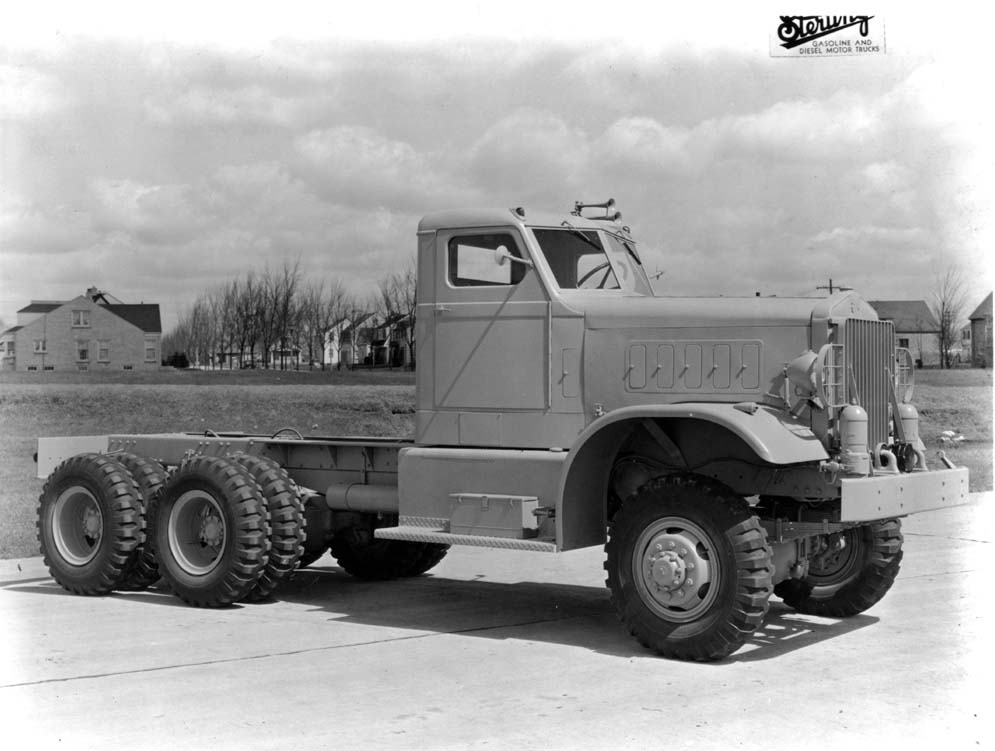 On many of the photos I have placed a 2 letter code at the end of the description, that is the initials of the person who either took the photo, or sent it to me: BG is Bob Gilbreath; DM is Don MacKenzie;
TS is Tom Siemons; PM is Pat MacPhail.
On many of the photos I have placed a 2 letter code at the end of the description, that is the initials of the person who either took the photo, or sent it to me: BG is Bob Gilbreath; DM is Don MacKenzie;
TS is Tom Siemons; PM is Pat MacPhail.
I have 4 shots of the Stuart Motors DDS235, (one you already have), one is a head on shot taken at the same time as the one you have posted. Both were taken by Bob Gilbreath. Theother 2 are more recent, and were
sent to me by Don MacKenzie. This truck still gets worked. It appears to have been retrofitted with a diesel. Don also sent the great factory photo.
There are 3 photos of survivors from Tom Siemons, a Sterling collector. The yellow wreckerhas been re-cabbed with Sterling's post war cab. Notice the rounded windshield corners. The other yellow truck photo,
with the long wheelbase, is from Pat MacPhail, another old truck collector. There are a couple of "official photos", with specs on the backside of one, and some military shots. These all came from various places
on the internet.
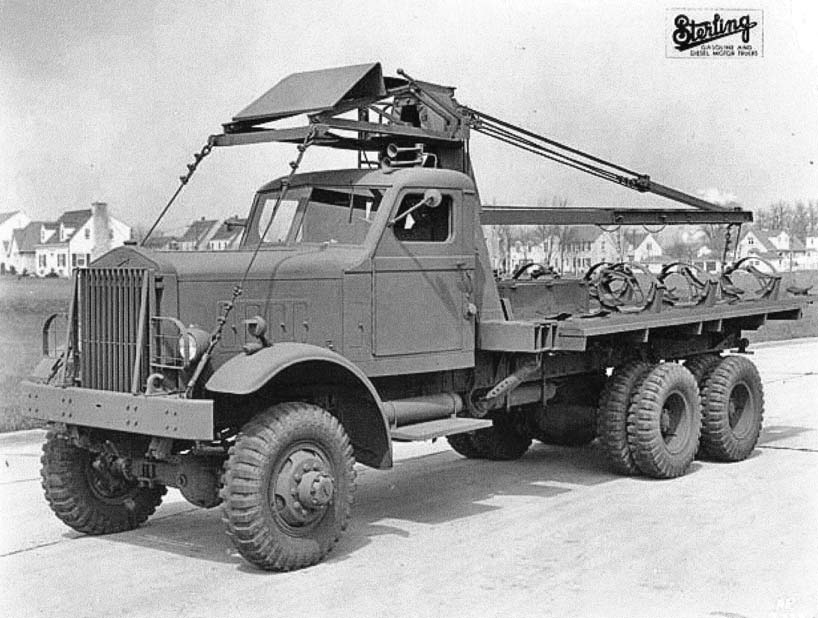 Sterling also built a smaller 6x6 with similar wrecker equipment, the DDS150. I believe this was a 4-5 ton model. It appears to have been built for the Navy to handle torpedoes. I have never seen an "in service"
photo but a few of these trucks have survived. This is another truck that is not in any of the books.
Sterling also built a smaller 6x6 with similar wrecker equipment, the DDS150. I believe this was a 4-5 ton model. It appears to have been built for the Navy to handle torpedoes. I have never seen an "in service"
photo but a few of these trucks have survived. This is another truck that is not in any of the books.
Perhaps the largest standardized wrecker of any type built during the war was Sterling's huge 6x4 HCS330, also built for the Navy. These trucks were rated at 15 tons, and featured Sterling's patented center driven
dual chain drive bogie. The bogie was very similar in appearance to the Knuckey bogie used on the Pacific M26 "Dragon Wagon", but Sterling had introduced theirs many years previous, in 1931. Military photos of
then HCS330's are rare also. The Lynch civilian truck in the photo is very similar in appearance to the military models, with no major modifications.
Taigh, in just a short time you already have the best website devoted to the big military wreckers. You have done a nice job, and it is especially commendable since the main reason for your website is to promote
the aircraft side of your business.Idon't know how far you want to stray fromthe wreckers,if at all, but I do have some more photos of USAAF Reo and Biederman F-1 fuel tankers, and Reo and Sterling Cardox crash
trucks. Most of these are military "in service" shots. I can send them along if you are interested.
Thanks for taking the time to post all this stuff, keep up the good work. Take Care."
Pictured below is the is the DDS150 Torpedo Crane (Judging the early markings on the aircraft I am guessing 1941 or early 1942.), the Biederman Wrecker towing a disabled P-40, and the F1 fuel service truck data plate Jeff bought on ebay, as well as a few more photos. Steve added this comment about the last photo: "The ship is a P-40 (P-40-CU, the first production model) and I'm fairly certain that it's from the 35th Pursuit Squadron, 8th Pursuit Group. If so, the location would quite likely be either Langley Field, VA or Mitchell Field, NY. The time frame would be no earlier than June 1940, but I don't know when the 8th transitioned to the P-39, and so don't know offhand what the tail end of the time-frame would be. Maybe Fall 1941 or thereabouts?"
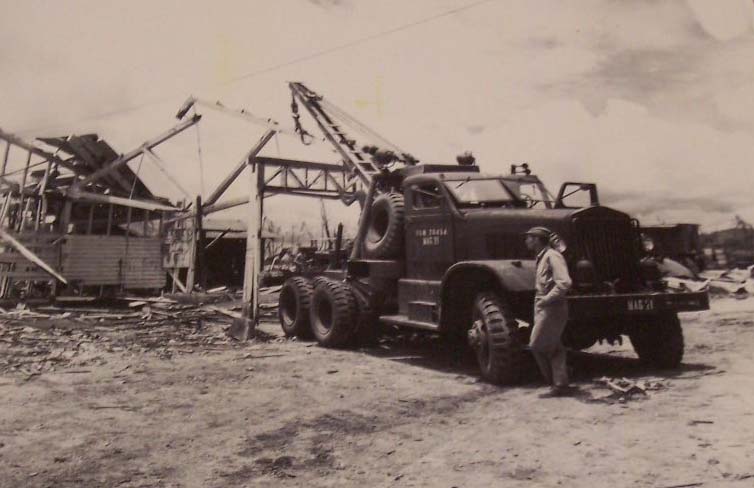
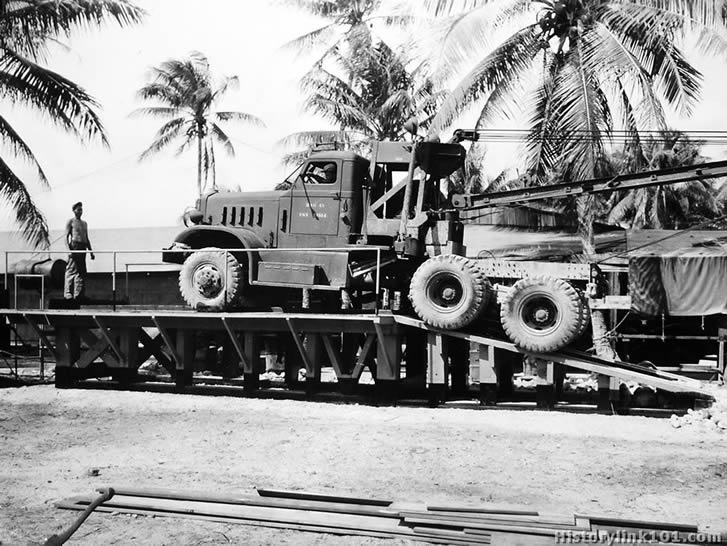
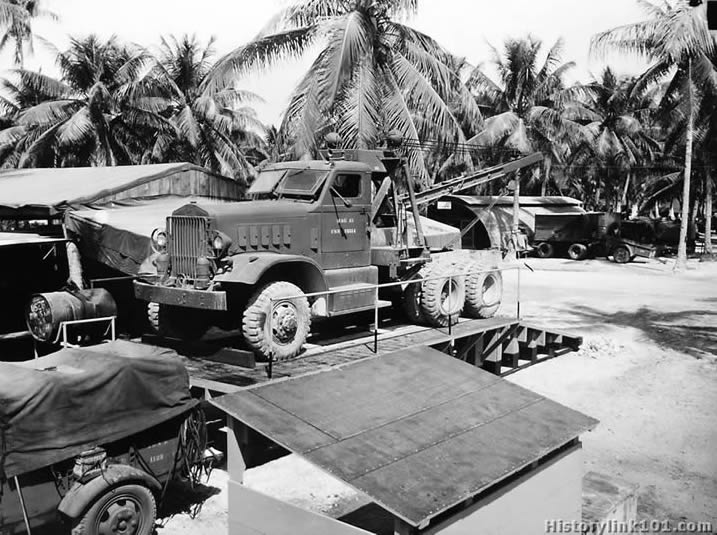
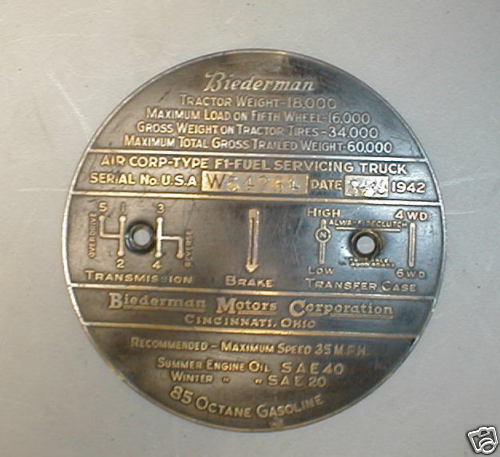
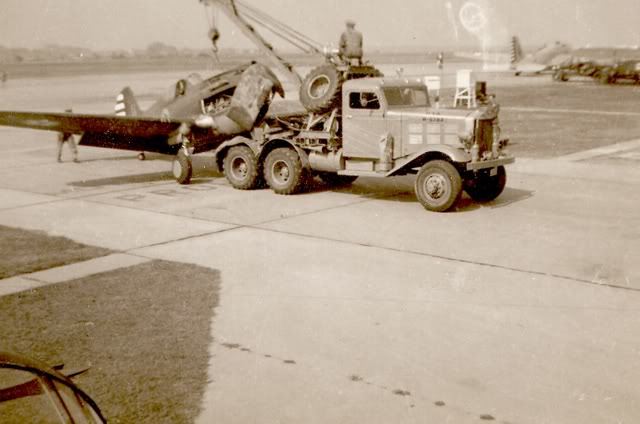
For some shots of surviving Sterling's click here. Another recent addition can be found here
Good stuff, keep it coming!Admission of guilt: Many of the photos above were shamefully taken from various sources on the internet. I will be trying to insert photo credits and links as I can find them. Please bear with me. If you have information or photo credits for any of these pictures please let me know so I can post that information. Should you have any C-2 wrecker photos or stories that you might like to share please send them to me and I will gladly post them with credit to you.